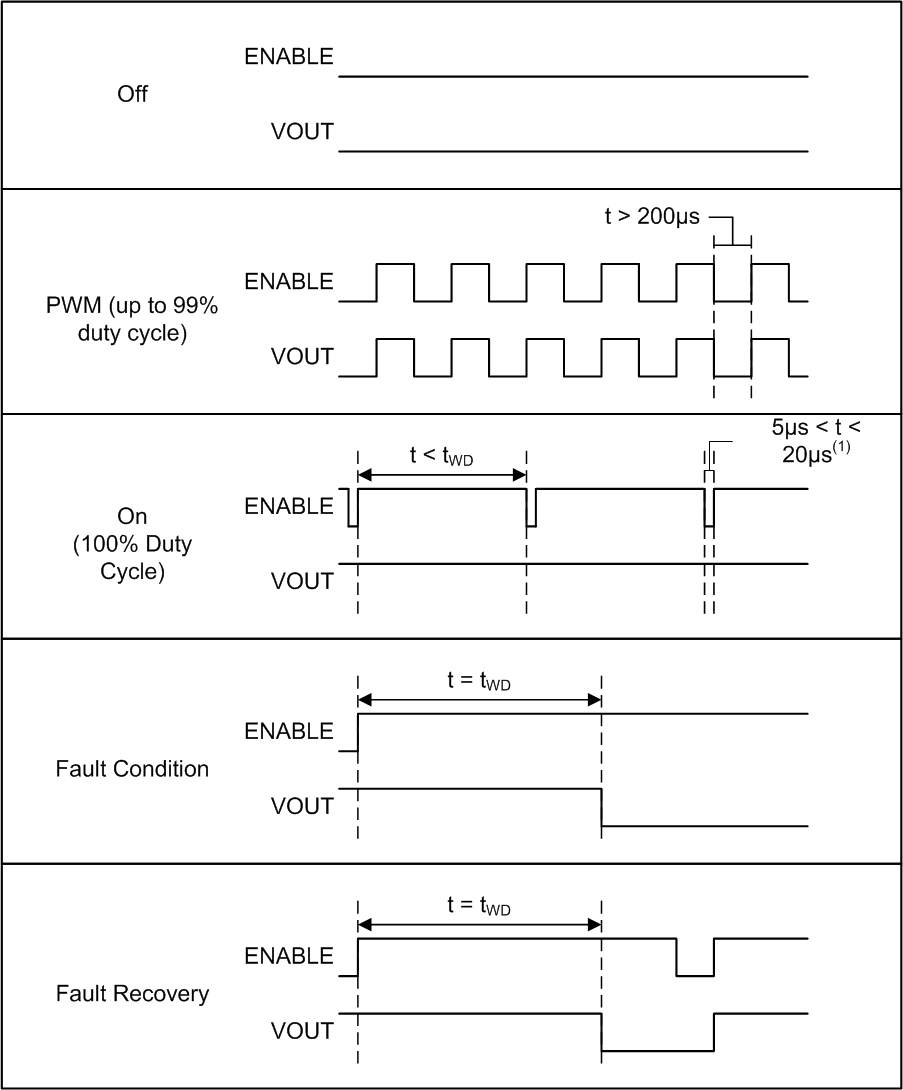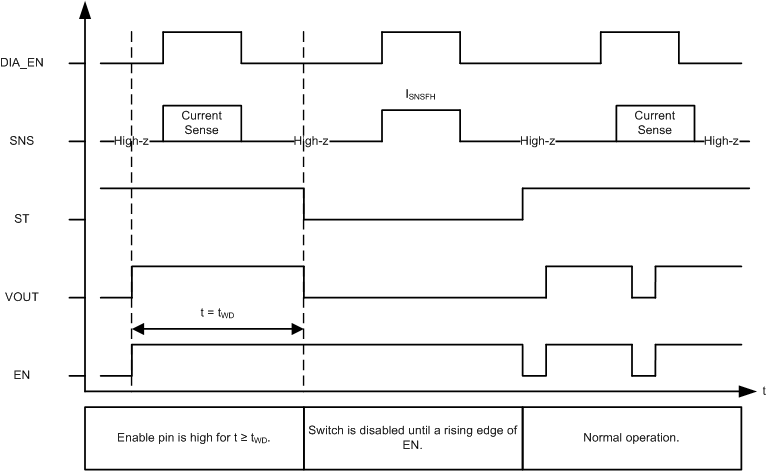ZHCSJ60D November 2018 – December 2019 TPS1HA08-Q1
PRODUCTION DATA.
- 1 特性
- 2 应用
- 3 说明
- 4 修订历史记录
- 5 Device Comparison Table
- 6 Pin Configuration and Functions
- 7 Specifications
- 8 Parameter Measurement Information
-
9 Detailed Description
- 9.1 Overview
- 9.2 Functional Block Diagram
- 9.3
Feature Description
- 9.3.1 Protection Mechanisms
- 9.3.2 Diagnostic Mechanisms
- 9.3.3 Enable Watchdog
- 9.4 Device Functional Modes
- 10Application and Implementation
- 11Power Supply Recommendations
- 12Layout
- 13器件和文档支持
- 14机械、封装和可订购信息
9.3.3 Enable Watchdog
For some automotive applications, it is necessary to continuously verify that there is valid communication between the microcontroller and the switch enable pin. The purpose of this is to protect against possible communication faults (for example, microcontroller failure). The \ includes an optional watchdog feature which continuously polls the enable pin. Note that this feature is only activated for device version E, so the below information is only applicable to version E.
To use the watchdog feature, the microcontroller should apply a PWM to the switch enable pin. If this PWM is not present (EN is high continuously for ≥ tWD) the switch will automatically be disabled. The watchdog timer is reset on the rising edge of EN. The fault indications are cleared upon the falling edge of EN. The following figure illustrates how the switch will respond to the EN PWM.

Figure 52 illustrates the behavior of the watchdog feature.
 Figure 52. Enable Watchdog Timing Diagram
Figure 52. Enable Watchdog Timing Diagram